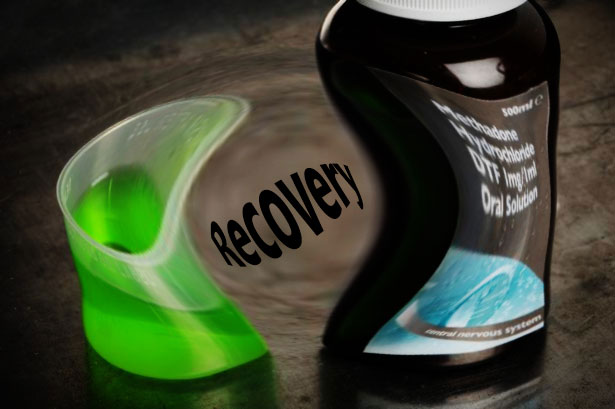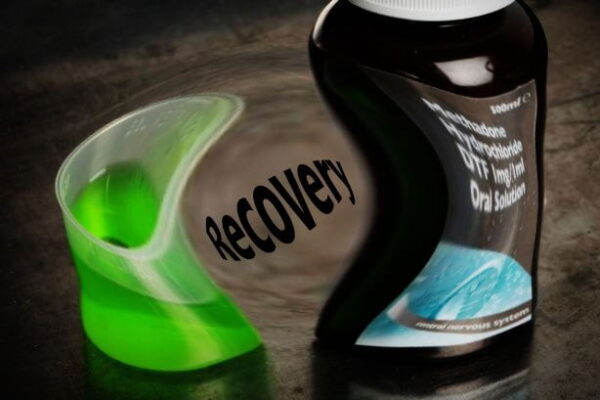
Berlin, like many big cities has a heroin problem. People presenting for help are being prescribed opioid replacement therapy (ORT) – a form of medication assisted treatment (MAT) in greater numbers. That’s a good thing isn’t it? Yes, but it’s not completely straightforward. A lot depends on what the professional and their patient think is the end goal of treatment.
At the start of this interesting German paper from a few years back entitled, “Why do patients stay in opiod maintenance treatment?”, Dr Stefan Gutwinski and colleagues say that the scientific literature indicates the point of opiate replacement is: “to increase survival and bring stabilization to patients, in order to enable them to reach abstinence of opioids.”
We can simplify this into two aims:
- To make things better, then
- To move on to abstinence
Many professionals would not agree with the second aim and would possibly replace it with ‘to retain in treatment’. There is an often unspoken tension between what researchers tell us is safest and what those coming to treatment set as a goal. As I wrote yesterday, abstinence is also something families prioritise. Despite this, while the evidence is pretty solid that number one is generally achieved, there is less to convince us that the next bit is happening.
To lay my cards on the table, I am committed to harm reduction and have prescribed (and do prescribe) MAT in community and residential settings. I also believe in the capacity of many with opioid use disorder to move on to long term abstinent recovery with appropriate treatment and safeguards. That’s why this kind of research is of interest to me.
The paper outlines that retention in ORT is not great, with just over half of patients sticking with methadone and fewer with Suboxone. Jason Schwarz has written before about disappointing retention rates for both methadone and buprenorphine in many research studies. It may be that long-acting injectable buprenorphine will improve this.
Despite poor retention in the Berlin study, they did report growing numbers of people on ORT. It appears though they are people who are not moving on to abstinence; I suppose the ones the press call ‘parked’ on methadone. So the authors ask: “Why is this?”
The researchers speculated that it could be because:
- fewer people are dying;
- that people don’t want to move on because of the benefits they are getting;
- that detox is generally unsuccessful, or
- that what staff think patients want is not what patients actually want.
To test this out they sent out an anonymous questionnaire to treatment settings in Berlin. Forty-six staff (more than half doctors and the rest nurses and admin) and 986 patients completed it. They focussed on whether ORT was of benefit, whether it was perceived as harder to detox from than heroin and how strongly patients wished to come off of ORT compared to how strongly staff thought their patients wanted to come off.
What did they find?
- Both patients and staff thought ORT helped physical and mental health.Beneficial effects of ORT on the ability to work and on crime were rated significantly higher by patients compared to staff.
- Staff and patients agreed that coming off ORT was hard. Patients thought it harder than coming off heroin.
- Patients wanted to eventually come off ORT at a significantly higher rate than staff estimated.
About half of the patients in the sample were over 40 years old and more than one in ten were over 50 with almost three quarters of patients struggling with opiate dependency for more than ten years. Only ten percent had never tried to detox, suggesting high failure rates which may have reinforced the belief that ORT was hard to more on from.
There was no differentiation made between methadone and buprenorphine. The study didn’t look at whether evidence based support and treatment was given at the time of the detox.
The thing that intrigues me the most was the:
striking discrepancy between the patients’ and staff members’ assessment of the patients’ desire to end OMT on the long term. The large majority of patients report the desire to end OMT on the long term, whereas only a minority of staff members believe that their patients might really have such a desire

David Best found much the same thing (in aspirational terms) in a sample of drugs workers in the UK. They believed only 7% of their clients would eventually recover when long term recovery rates are actually much higher. The DORIS study in Scotland angered some professionals when it reported that many patients entering treatment wanted only to become drug-free; something treatment was not delivering.
A study in Leeds found that service users, their families and friends placed “considerable weight” on abstinence and “ways of maintaining abstinence”. It’s clear to me that where there is such a mismatch, when the bar is set so low and when there is little hope pervading treatment settings, then it’s no wonder that so few actually do move on.
By the conclusion the authors find themselves at odds with the assertion at the start of the paper (that ORT has an aim of ‘abstinence from opioids’.) Here’s what they say (my emphasis):
Finally, detoxification of OMT is not the prime objective of treatment. The prime objective of treatment is continued physiological and social stabilization. As yet, there is no validated medical cure for opioid addiction. Until a curative medication or a safe curative procedure is developed, many of the patients may have to remain in treatment for the duration of their lives to avoid relapses, increased criminality, subsequent overdoses, and death during the post treatment period.
So the solution to the mismatch between the low expectation of staff and the higher expectation of patients is to lower the expectation of patients to that of staff? Well that’s one way of looking at it.
We still have the problem that lifelong ORT, whatever its evidenced benefits, is not what people want and that, in fact, many do move out of opiate dependence into long term abstinent recovery. These people would no doubt agree that methadone did make things better, but for them it was not the final destination.
What would it be like if the dearth of recovery-oriented research in the UK was addressed, if we focused on what works rather than what doesn’t? If all we do is compare ORT with stand-alone detox, then we are always going to see poor outcomes. What is the impact of abstinence-focussed treatment on injecting and drug deaths in Scotland? We don’t know.
Another more enlightened and rewarding approach might be to move away from thinking about a drug or a medical ‘cure’ as being the solution to addiction and looking to introduce recovery-oriented systems of care using strongly evidence-based psychosocial interventions and treatment where those interventions are of adequate intensity and duration. Linking people to recovery communities is protective with regards to relapse, but there is little evidence that it is happening to the extent that it might.
In the UK we have recovery-oriented drugs policies which aim for rapid access to treatment with a variety of approaches on offer. Reducing harms has to be first priority, but is it enough in itself? Clearly we need to listen to what patients and their families want from treatment and be honest about what’s going to help them get there.
The answer is not to lay out the choice as ‘ORT or abstinence’ but to see how we use ORT as a tool and to find ways of bridging people out of treatment and reliance on services into recovery if this is their goal. We can put robust structures in place to minimise harm and have rapid access back into medication assisted treatment if it is needed.
Some may indeed choose to remain in treatment in the long term, but we need to set the bar high and be positive about patients’ ability to move on in a treatment system that’s joined up and meets the needs and goals of patients at various points in the recovery journey.
Professionals should spend time with people in recovery to engender hope in themselves. The ethos and structure of systems of care need to change so that abstinent recovery becomes part of the norm and range of options instead of a wild aspirational status that we think is too dangerous and we actually believe most people will never achieve.
Now how do we make that happen?
Footnote: this is an updated version of a previously published blog.
